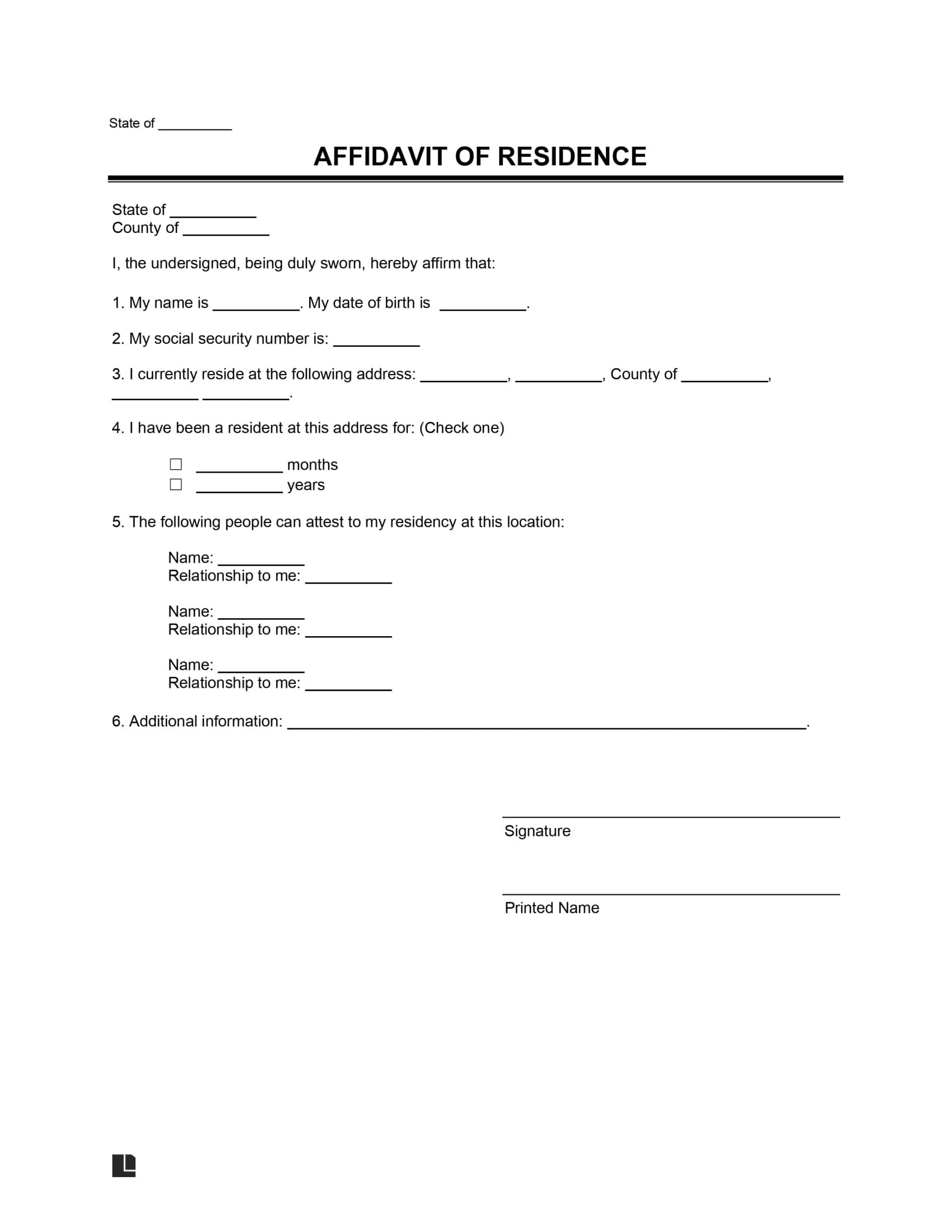What Is a Proof of Residency Letter?
A proof of residency letter (affidavit of residence) is a legal document used to verify that you live where you say you do. A court, school, DMV, or other institution can request proof of residency at any time.
The affidavit of residence verifies the current home of a living person as may be required by schools, employers, banks, and courts.
Acceptable Documents for Identity Verification
Attaching any supporting documents with a proof of residency letter will help you streamline the process. A utility bill, bank statement, lease agreement, health insurance card, tax return, or mortgage statement will all work to prove your residency.
When Is a Proof of Residency Letter Needed?
A proof of residency letter is required whenever you need legal proof of where you live. In some situations, presenting a driver’s license and a utility bill with your name is required to prove your residence. But in many cases, you still need to provide a notarized affidavit.
You will likely need an affidavit of residence in the following situations:
- First-time registration of your child in public school.
- Applying for a driver’s license after moving to a new state.
- Verifying residency for a court or business as per their requirements.
- Verifying residency with a college or university to qualify for in-state tuition rates.
- Registering and receiving funds through a public retirement program.
- Registering and receiving Medicaid benefits within a state.
- Verifying the custodial parent’s address after a divorce for school registration purposes.
- Verifying the address of a parent after a divorce for child support purposes.
How to Write a Proof of Residency Letter
If you want to know how to fill out a proof of residency letter, follow these step-by-step instructions to ensure the document is legally valid.
Step 1 – Personal Details of the Affiant
The first step is filling in the affiant information. The affiant is another word for the person giving the sworn statement or declaration. You must provide the following personal information:
- State and County
- Name
- Date of Birth
- Social Security Number
- Address
- Length of residency
Step 2 – Who Can Vouch for Your Residency
This part is crucial as it contains the information of witnesses who can prove that you’re living at your current address. A witness can be anyone other than the affiant’s spouse who has known you for at least a period, such as six weeks. The witness must also be a resident of the same state as the affiant. Check your state requirements for the time required to be a witness.
You can also include additional documents, such as phone bills, utility bills, or a lease agreement, to help prove your residency.
Step 3 – Sign the Document
Once you’ve added the above information, provide your signature to complete the first half of the document.
Step 4 – Notarize the Affidavit
It should be notarized by a notary public so that they can confirm your identity. They will add the necessary legal language and sign the document.
Proof of Residency Letter Sample
Below is a proof of residency letter (affidavit of residence) sample available to download in PDF or Word format.


